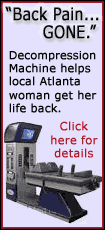|
 The rules adopted Thursday put the number of electric and hydrogen fuel-cell vehicles that automakers sell in California at 7,500 by 2014
-- a 70 percent reduction from the 2003 target. The rules adopted Thursday put the number of electric and hydrogen fuel-cell vehicles that automakers sell in California at 7,500 by 2014
-- a 70 percent reduction from the 2003 target.
"We are disappointed. We think this proposal doesn't take us on the road to meeting the state's long-term global warming goals," said Spencer Quong, a senior vehicles analyst at the Union of Concerned Scientists.
Auto manufacturers said they could not meet the California standard and needed more time to make affordable hydrogen and battery-powered cars.
"Pushing this technology into the market before they are commercially viable ties up resources that could be better utilized by advancing core technologies," said Sara Rudy, an emissions regulatory manager at Ford Motor Co. "It is important at this stage to be nimble."

The other manufacturers that must comply with the rules are General Motors Corp., Toyota Motor Corp., Honda Motor Co., Chrysler LLC and Nissan Motor Co.
The decision is expected to affect 12 other states that had adopted California's target for zero-emission vehicles.
In essence, the air board took two steps: It cut the number of zero-emission vehicles it wants on state's roads, while at the same time offering an alternative: the gas-electric hybrids.
The air board said the six largest automakers must sell nearly 60,000 plug-in hybrid vehicles in California while they develop the more advanced technology that will allow mass production of pure zero-emission vehicles.
Board chairwoman Mary Nichols described the move as a major step toward putting cleaner cars on the road. The plug-in hybrids envisioned by the air board have yet to be produced but are in development by several automakers.
"We're introducing a whole new category of vehicles to the public," Nichols said. "I don't think it's a step backwards in the real world."

General Motors is developing a rechargeable vehicle it hopes to have on the market in 2010. The Chevy Volt would run on a battery for 40 miles, and then fuel would power the on-board generator, GM spokesman Dave Barthmuss said.
California adopted its zero-emission vehicle mandate in 1990 as part of an attempt to reduce smog-forming emissions such as nitrogen oxide.
[to top of second column] |
 The rule required that 10 percent of new cars sold in the state by the country's six leading auto manufacturers be completely nonpolluting by 2003.
The rules have been modified four times since they were introduced. The biggest change came in 2003, when the Air Resources Board significantly scaled back the mandate and ruled that hydrogen cars, hybrids and cleaner-burning gasoline vehicles could meet the state's goals.
The regulators were concerned that battery-powered cars could not be mass-produced and favored hydrogen cars. They also faced a lawsuit from the auto industry.
Although some lower-emission vehicles -- especially hybrids -- have begun making an impression in the marketplace, the main automakers still do not have a commercial zero-emission vehicle.
The revised 2003 rules set a goal of putting at least 25,000 zero-emission cars on the road in California by 2014, far below the original 10 percent mandate. The rules adopted Thursday put the number of zero-emission vehicles required by 2014 even lower.

The changes adopted by the air board will affect just a fraction of the overall fleet in California. About 1.5 million new vehicles are sold in the state each year.
The 12 other states that adopted the California standard are Connecticut, Maine, Maryland, Massachusetts, New Mexico, New York, New Jersey, Oregon, Pennsylvania, Rhode Island, Vermont and Washington. Automakers are required to sell 120,000 of the new plug-in-hybrids in those states by 2014, said Tom Cackette, the air board's chief deputy executive officer.
Arizona, Colorado, Florida and Utah are considering California's standard, according to the Air Resources Board.
___
On The Net:
California Air Resources Board: http://www.arb.ca.gov/
[Associated Press; By SAMANTHA YOUNG]
Copyright 2008 The Associated Press. All rights reserved. This
material may not be published, broadcast, rewritten or
redistributed. |